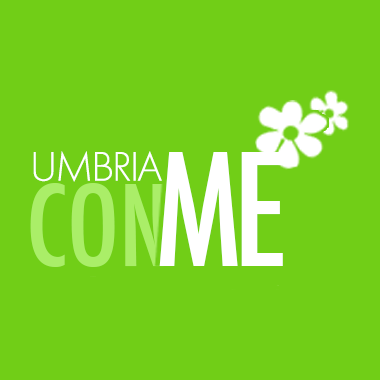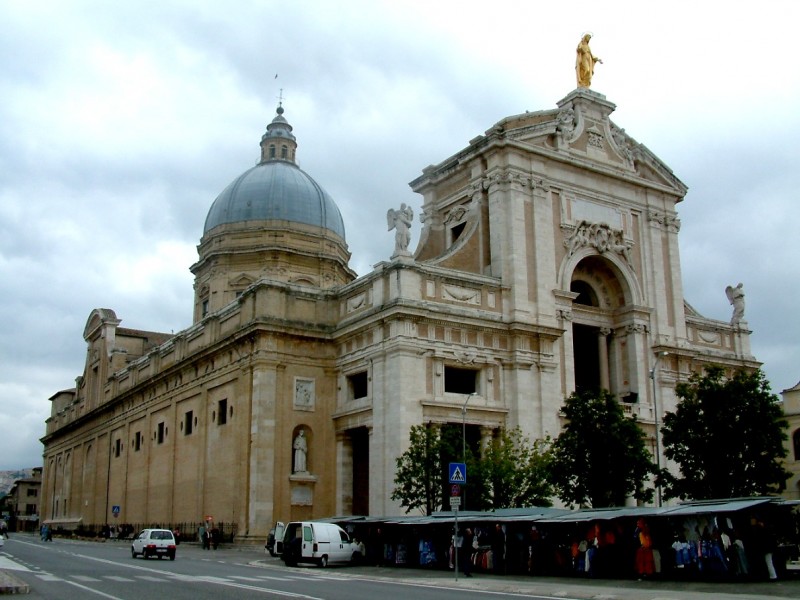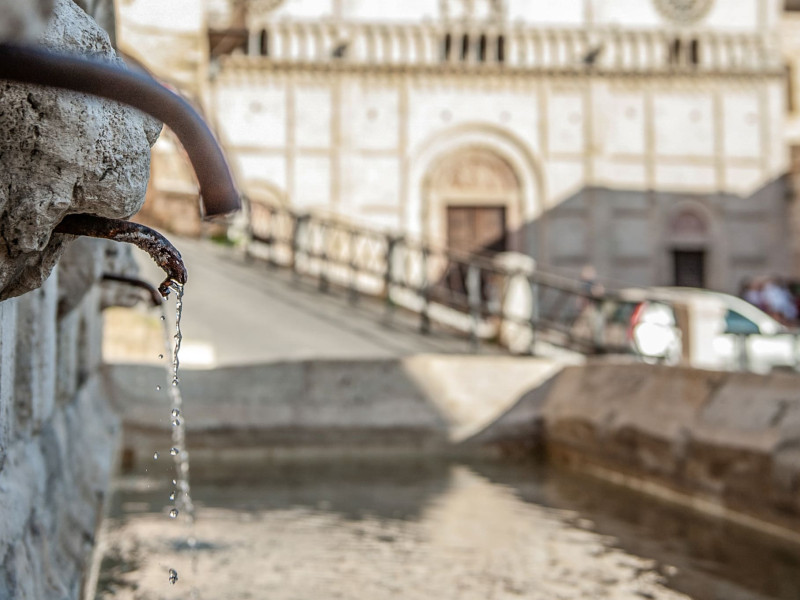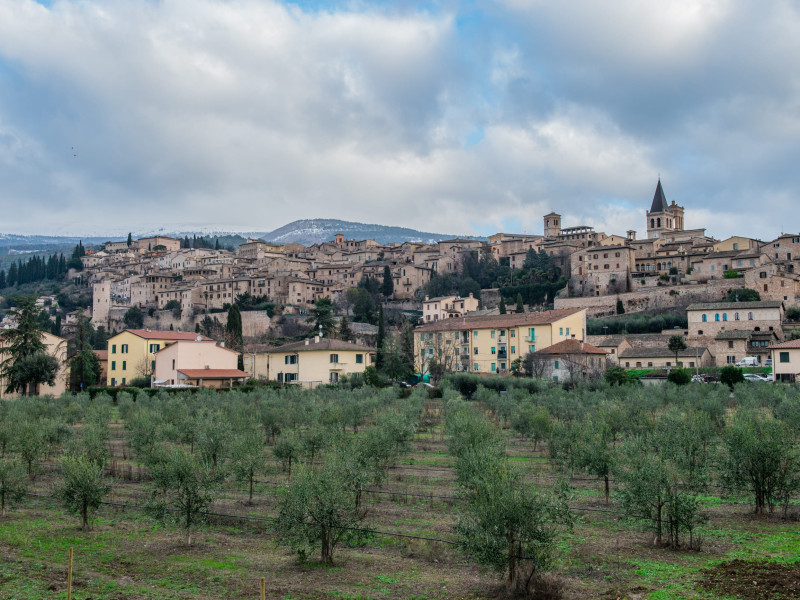Basilica of our lady of the angels with Porziuncola
At the conclusion of the Council of Trent, Pius V wanted the construction of the basilica for two reasons: to recognize the importance of the order of Franciscan Minorite and to welcome pilgrims who still flock there on the occasion of the Indulgence of the Pardon (July 31-August 2) established by St. Francis.
The church was completed in 1679 with the construction of the bell tower of the right side. It has three naves and was designed by Galeazzo Alessi; the execution of the church attended by Giacomo Martelli Giacomo Giorgetti and maybe even the Vignola.
Because of the collapse of the 1832 earthquake, the church was partially rebuilt by Luigi Poletti (1836-40) in the same manner. The façade was lifted in 1925-30. In 1930 the statue of "Our Lady of the Angels" by the sculptor Colasanti was placed at the top of the façade, while the present layout of the square happened thanks to the architect Nicolosi in1950.
The interior has three naves and has lateral chapels whose wall decorations represent the most complete collection of the Umbrian painting of the late sixteenth and early seventeenth century. A note of artistic and religious interest linked to S. Francis life are the Porziuncola Chapel and the Chapel of the Transit .
The chapel of the Porziuncula dates back to the tenth or eleventh century. It is dedicated to St. Mary of the Angels or St. Mary of the Portiuncula. Around 1205, St. Francis established his residence restoring it and founded the Franciscan Order (1208). The top of the façade is decorated with a fresco by Friedrich Overbeck from Lubeck (1829) depicting "St. Francis begs Jesus and Mary for granting the Indulgence of the Pardon." On the right side fragments of frescoes are visible (with their Sienese influence) dating back to the fifteenth century. In the Altar, large altarpiece by Ilario da Viterbo depicting "The Annunciation and Stories of Forgiveness."
The Chapel of the Transit is the infirmary cell where St. Francis died on October 3, 1226. Outside frescoes by Domenico Bruschi (1886), Deathand funeral of Franciscan Saint. Frescoes in the interior made by Spagna. Inside the chapel is the niche containing the statue of St. Francis, in glazed terracotta by Andrea della Robbia.
From the sacristy it leads to the hallway. This brings to the Rose garden linked to a legend about the life of St. Francis, the small garden planted exclusively with roses without thorns. Rose Garden is adjacent to the chapel of the Rose Garden (1518) consists of three rooms decorated with frescoes by Tiberio d'Assisi, who also designed the wall frescoes of the Oratory of St. Bonaventure (1506). Along the exit route the fifteenth-century cloister is visible on the left as well as what remains of the convent at the time of St. Bernardino of Siena (sec. XV).
To visit the Basilica of our lady of the angels and Porziuncola see our Full day tour of Assisi
from: www.umbriatourism.it




Share